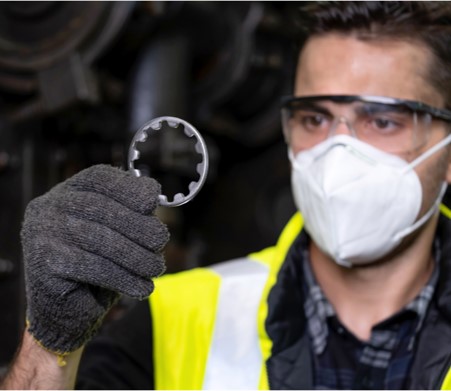Why is it better to use Rust preventive and VCI packaging both ?

Did You Know
Preservation of metal
can be extended
There are various corrosion preventive methods and combinations available for temporary protection in the automotive and light engineering industry. The two most popular methods are Rust Preventive Oils (RP) often used in combination with the Volatile Corrosion Inhibitor (VCI) for the protection of parts during the manufacturing process, shipment, and storage.
People often wonder, why both Rust Preventive Oil and VCI Packaging are required to use together as they are intended to fulfil the same objective.
JIT and highly optimized processes
demands light and non-interfering RP
Optimized quantities of RP and VCI
to achieve cost and technical objectives
While the use of either may be sufficient to fulfil the purpose in many applications, the use of both technologies in tandem is intended to accomplish the following outcomes, especially in cases where climatic conditions are moist and condensing:
- Extend the protection life of the preserved metals
- Ensure the use of optimized quantities of both products to achieve cost and technical objectives
- To offset some limitation(s) of both these technologies
- We will discuss in brief each of these outcomes
- Extend the protection life of the preserved parts
The use of both, RP and VCI, often help in increasing the overall protection provided to a metal part when used in tandem. This is naturally dependent upon the compatibility of both chemistries and due investigation should be done to establish this before putting them to use. RP has a protection life that can get exhausted by the natural afflux of time. This mostly happens due to the naturally occurring thermic cycles which ultimately fracture the barrier film provided by the Rust Preventive Oils. On the breaking of the Rust Preventive film, the VCI molecules present in the packages shall fill in the created voids due to their volatility and polarity. This extends the protection of the metals further till the layer created by the VCI molecules is exhausted.
Ensure the use of optimized quantities of both products to achieve cost and technical objectives
In the day and age of JIT and highly optimized processes, incoming parts are required to be served online with little or no need for subsequent processing. This requires the Rust Preventive Oils to be light and non-interfering with downstream processes and shall meet all cleanliness standards. The use of Rust Prevention with a thicker film not only requires cleaning before use but also increases the cost of Rust Prevention because of the use of higher quantities. The use of NOX-RUST thin-film technologies in combination with Daubert VCI materials has helped in meeting such expectations.
To offset some limitation(s) of both these technologies
The use of VCI alone would require the surface to be extremely clean – devoid of moisture, dirt, fingerprints, other residues, which may not be possible in conventional manufacturing lines. This is where Rust Preventive Oils help. The use of a light Corrosion Preventive Oil helps prepare the surface which can be subsequently protected by VCI. Similarly, some parts may require protection before or after they are packaged in VCI, during which such light Rust Prevention Oils are a big help.
Hence, the use of both these product technologies is found to be economical and useful in many applications, especially ones related to the export of parts.
An optimized and effective Corrosion Prevention Method can be developed by the Daubert Solution Engineering Team which can be validated by various accelerated corrosion tests and field trials.
Recommended Additional Reads




